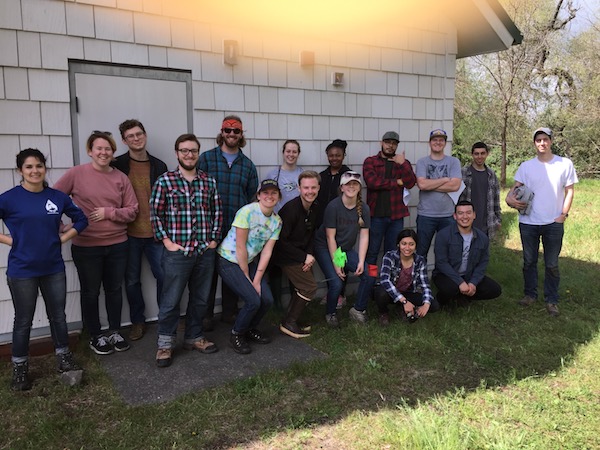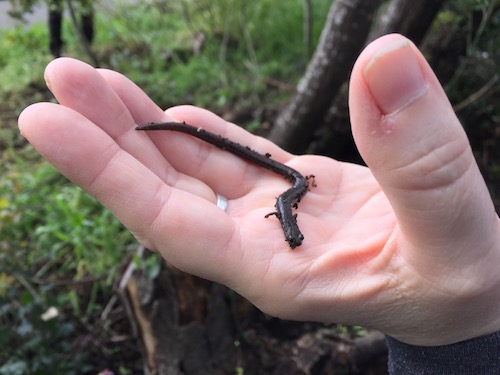Today was a special day on campus, a truly historic day, when Sonoma State University held the investiture ceremony for our 7th president, Dr. Judy Sakaki. In the morning, a wide variety of mini-workshops were held, along with a poster session, to showcase the work and research of SSU students and faculty. in the afternoon, the investiture ceremony took place in the Green Music Center. It was pretty magnificent, all the way around.
Earlier in the semester, I’d decided that this was important enough that I wanted to encourage my students to attend, so instead of lecturing today, I asked my morning class (Global Environmental Issues) to attend the poster session and at least one of the mini workshops. For Conservation Biology in the afternoon, I let them know that I would be attending the investiture, and I strongly suggested that they do the same. There were two overall reasons I wanted to do this . . . first, it’s a special day on campus, and I think it’s nice for all of us to have a break from the regular schedule from time to time. But more than that, this was a day for the entire campus community to come together, and I wanted my students to know that they’re part of this community, and maybe make some new connections with people on campus.
Turns out, this was a good decision.
 My day started off in Seawolf Plaza, where I happened upon a poetry reading in progress, “SSU Student Poets Reading: Resistance and Hope in our Current Political Moment. Among the presenters was one of my former students, who shared some powerful, profound things that he’d written about the current state of our world.
My day started off in Seawolf Plaza, where I happened upon a poetry reading in progress, “SSU Student Poets Reading: Resistance and Hope in our Current Political Moment. Among the presenters was one of my former students, who shared some powerful, profound things that he’d written about the current state of our world.
From there, I headed up to the poster session, where I got talking with the authors of some research about the effect of media and technology on students. Not only was it an interesting project, but in talking with the Psychology professor who’d done the research, I found out that they knew who I was, because several of my students had come by and inquired about the research (which was part of the assignment I’d given them). Apparently, my students were asking VERY good questions, and really engaged with the process. AHHHH YES!!!!!!!! This was exactly what I’d hoped would happen. 🙂
My next stop was a session by Dr. Jeff Baldwin, “What Does Sustainability Mean? Active Learning With and From Sonoma State Students.” Anything with “active learning” in the title grabs my attention, and after Jeff started talking, I realized this talk had even more relevance to me, as he was talking about some assignments and results from a course that I’ll likely be teaching in the not-too-distant future. He described some assignments where he sent students out to do things like calculate the carbon footprint generated by their transportation needs, and spend a day riding the bus. That alone was interesting, but the really cool part is the data he’d collected from them about these activities – looking at how much it changed their own viewpoints, and how much they now seemed committed to making long-term changes to their own behavior, and possibly supporting systemic changes, as well. You can read more about his research in his paper, “Sustainability Education Through Active-Learning in Large Lecture Settings: Evaluation of Four Out-Of-Class Exercises.” Afterwards, I chatted for a few minutes with a couple of other professors, and we had a good conversation about how to improve learning outcomes for students, while keeping our own workloads under control.
After a lunch meeting, I headed in the direction of the Green Music Center. Along the way, I decided to wander along Copeland Creek, and through the Butterfly Garden. It was an absolutely stunning day, and the sound of the water trickling through the creek never fails to cheer me. Here are a few photos I took along my walk:

I’ll cover the actual ceremony in a separate post, as this one’s getting a bit long. Plus, I’m waiting for the event’s photographer to post some photos online.






















































